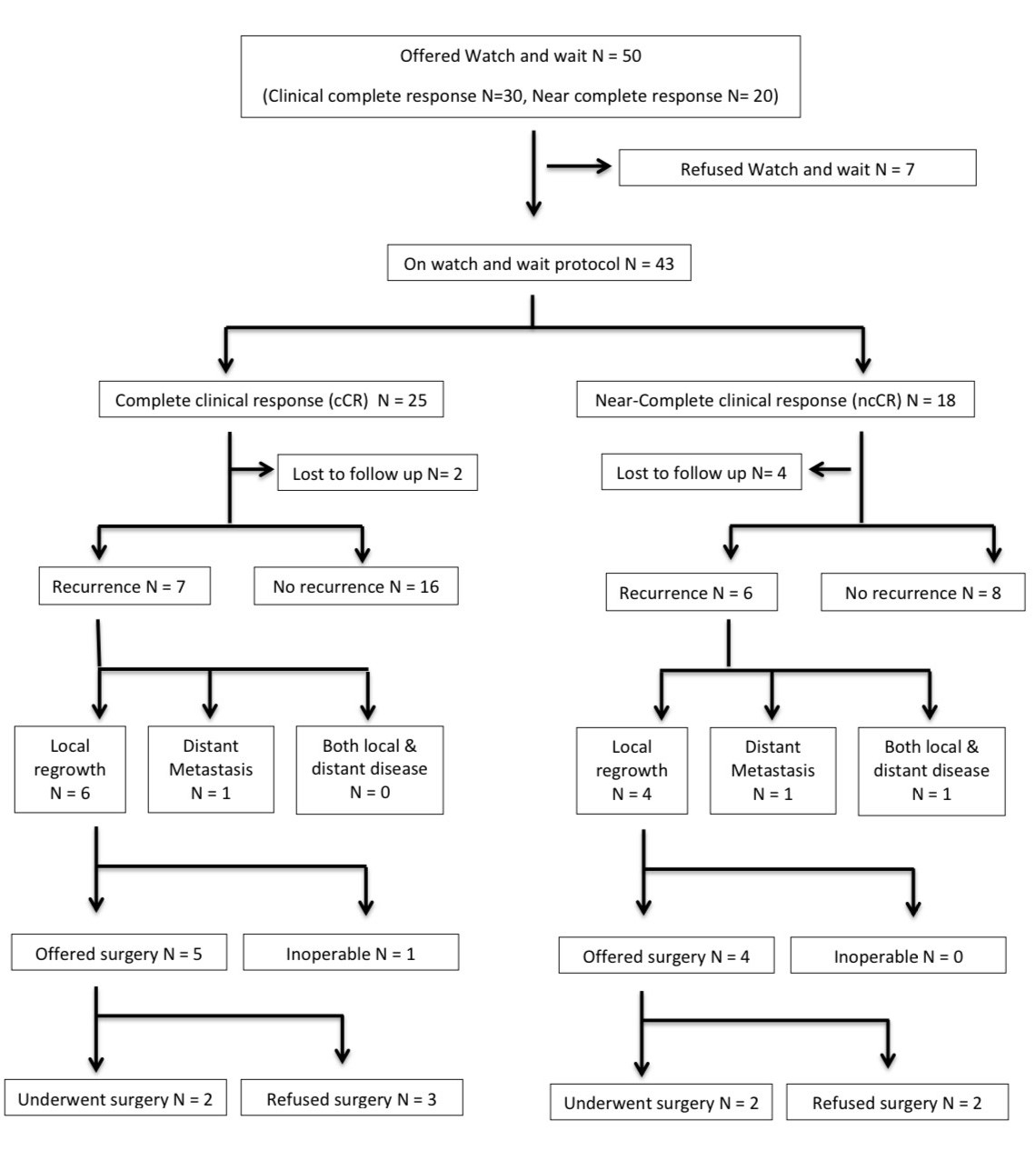Back to 2024 Abstracts
FEASIBILITY AND OUTCOMES OF WATCH AND WAIT TREATMENT STRATEGY IN RECTAL CANCER – AN INDIAN PERSPECTIVE WITH TEN-YEAR DATA ANALYSIS
Rajeevan Philip Sridhar
*, Royson J. Dsouza, Rajat Raghunath, Rohin Mittal, Mark Ranjan Jesudason
Christian Medical College Vellore, Vellore, Tamil Nadu, India
Background:Patients with complete and near-complete clinical response after chemoradiotherapy for rectal cancer can be offered organ preservation through a Watch-and-Wait strategy. While large data is available on this approach from high-income countries, the feasibility and outcomes of this strategy in low and middle-income countries are not known. This study aims to understand the feasibility and outcomes of this strategy in low and middle-income settings in comparison with the literature.
Methods:This is a retrospective analysis from the colorectal unit of a tertiary care teaching hospital. All consecutive patients who had complete or near-complete clinical response after chemoradiotherapy for rectal cancer and opted for a watch-and-wait treatment strategy between April 2013 and March 2023 were included. Data was collected from a prospectively maintained database and electronic hospital records. Following chemoradiotherapy, patients were reassessed by clinical exam, endoscopy, and MRI imaging; and were deemed eligible for watch and wait approach based on a multidisciplinary tumor board discussion. Complete clinical response (cCR) was defined as no growth palpable on clinical exam, endoscopy, and MRI scan. Near-complete clinical response (ncCR) was defined as no growth palpable on clinical exam and endoscopy with residual changes (TRG 2) on MRI scan.
Results:Fifty rectal cancer patients with a complete or near complete clinical response after chemoradiotherapy were offered a watch-and-wait treatment strategy. 30 patients had a complete clinical response, while 20 patients had a near-complete clinical response. Seven patients opted for surgery instead of a watch-and-wait approach and 6 patients(14%) did not return for any follow-up visit. At a median follow-up of 16 months (Range 3-67 months), 10 patients (23%) developed local regrowth (Six patients in cCR and four in ncCR groups). Of the 10 patients with local regrowth, salvage surgery was feasible in nine patients and one patient was inoperable. Four patients underwent surgery and the other five refused surgery. Two patients had distant metastasis and one patient had both local regrowth and distal metastasis. Non-salvageable recurrence was seen in 8% and 11% of cCR and ncCR patient groups respectively. The organ preservation rate was 56% among patients (64% in cCR vs 44% in ncCR groups) on the watch-and-wait treatment strategy for rectal cancer in our study.
Conclusion:Watch-and-wait treatment strategy is possible in low and middle-income countries with similar organ preservation rates, salvage surgery rates, and non-salvage rates compared to Western literature. However, about 15% of the patients did not return for any follow-up which is a limiting factor in patient selection for this strategy.

Back to 2024 Abstracts
